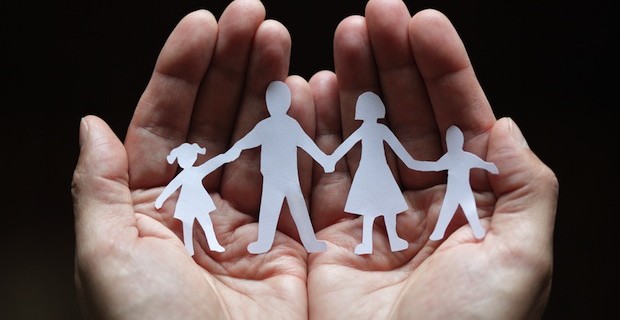 |
| Editor’s note: Image courtesy of Shutterstock. |
An article in the March issue of Pediatrics entitled “Marriage and the Well-Being of Children” tacitly admits that there may be empirical evidence that “children reared by same-sex couples fare worse than children in other arrangements.” However, the authors, Jeremy Garrett and John Lentos, argue that there are no “intrinsic properties of traditional marriages that make them uniquely efficacious in promoting the well-being of children” and if there were “it might make sense to grant exclusive state sanction for traditional marriage.”
There is, however, an intrinsic property of traditional marriage which makes it better for children: marriage joins the potential biological father and mother with vows to be there for each other and for the children conceived in the marital acts, which consummate and sustain their union. Anything that separates a child from his or her biological mother and/or father is a tragedy. Tragedies happen, but same-sex couples who acquire children make tragedies.Children conceived by artificial insemination donor (AID) for female couples or by surrogate motherhood for male couples are purposefully, premeditatedly, and permanently deprived of a relationship with one biological parent. To want to know, be known by, and loved by one’s biological parents is intrinsic to who we are as people. It matters.
Some argue that there is no difference between children conceived by AID or surrogacy for same-sex couples and those destined for male/female couples, and AID is no different than adoption. A study by Elizabeth Marquardt and associates entitled “My Daddy’s Name is Donor,” addresses these questions, comparing 485 adults conceived by AID, with 562 young adults adopted as infants, and 563 young adults raised by their biological, parents.
The study found that “as a group donor offspring are suffering more than those who were adopted: hurting more, feeling more confused, and feeling more isolated from their families…And as a group, the adoptees are suffering more than those raised by their biological parents….” The AID conceived adults were more likely to suffer depression, delinquency and substance abuse.
Marquardt pointed out that the purpose of adoption is “to find parents for children who need them. Donor conception functions as a market, the purpose of which is to create children for adults who want them.”
According to Marquardt, “Donor conceived children know that the parents raising them are also the ones who intentionally denied them a relationship with at least one of their biological parents. The pain they might feel was caused not by some distant birth parent who gave them up, but by the parent who cares for them every day.”
There is a reality television series called The Locator in which the host helps adults reconnect with biological relatives, the theme is: you can’t find peace until you find all the pieces. Episode after episode demonstrates the longing for biological connections.
Children conceived by AID feel this same need. They are speaking out about their situation and have set up websites hoping to find their fathers or half-siblings.
To call a same-sex relationship a marriage, starts a process by which the same-sex, non-biological partner is legally designated as “parent.” This is a fiction and the child knows it. All children know that they have a biological mother and a biological father. The state tells the child that his or her desire for a father or mother is illegimate, and worse that this desire is a betrayal of the people on whom he or she depends.
The child’s right to a father and mother supercedes any right of a same-sex couple to change the definition of marriage. The claim that this is a civil right based on equality makes no sense, because a same-sex relationship is not equal to marriage. It cannot result in the conception of a child who is biologically related to both partners. The deprivation is intrinsic and applies to every child conceived for a same-sex couple. It does not depend of the ability of the custodians to provide “adequate child rearing.”
The Pediatrics article may be responding to a recently published, large, well-designed study by Mark Regnerus, entitled “How different are the adult children of parents who have same-sex relationships,” which found significant problems among those raised by lesbian mothers. According to the study those with lesbian mothers were more likely than those with married, heterosexual parents, to have received welfare growing up (69%-17%), to currently be on public assistance (38%-10%), to be currently unemployed (28%-8%), to have had a sexually transmitted infection (20%-8%), to have been touched sexually as a child (23%-2%), to be forced to have sex (31%-8%), and to currently be in therapy (19%-8%).
While there have been a number of studies claiming to have found no difference between children raised by same-sex couples and those raised by their biological parents, a careful analysis of these studies by Loren Marks, entitled “Same-sex parenting and children’s outcomes: A closer examination of the American Psychological Associations brief on lesbian and gay parenting” found that the studies they referenced failed to met the APA’s own standard for projectable research, because of small poorly chosen samples, no comparison group, lack of long term outcome data, and statistical power.
Calling same-sex relationships marriages harms children. It says to them your need for your own biological father and mother doesn’t matter. It is to be hoped that the Supreme Court in reviewing the marriage cases coming before it puts the rights and welfare of children before the desires of adults.


No comments:
Post a Comment